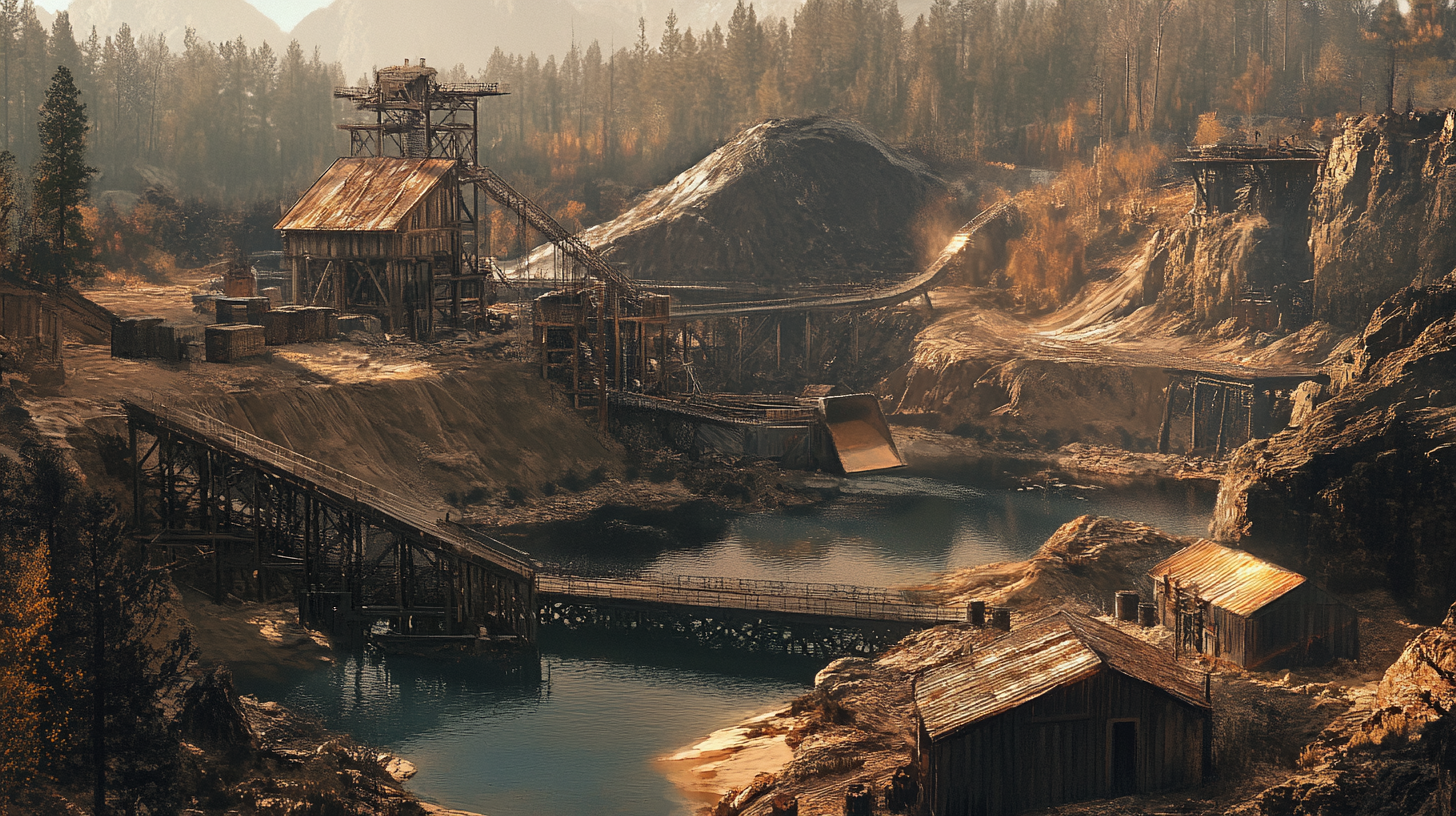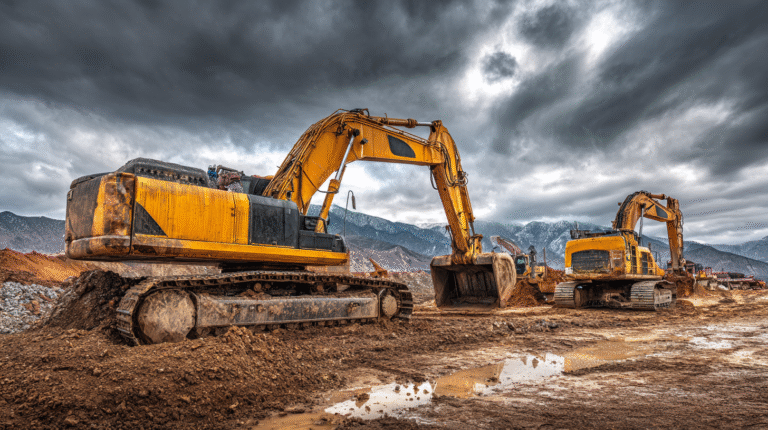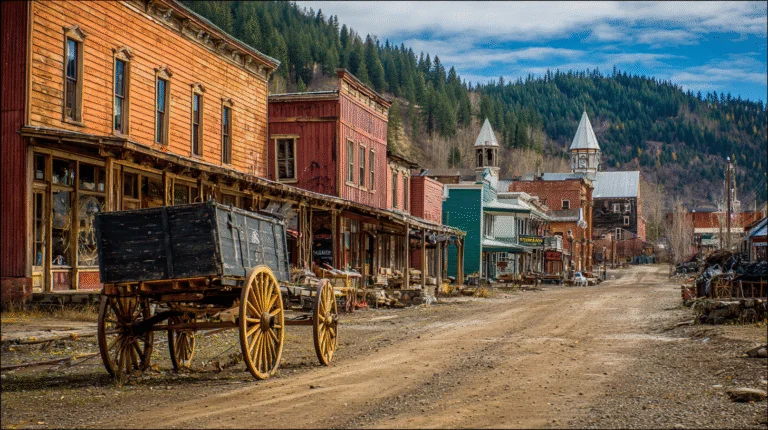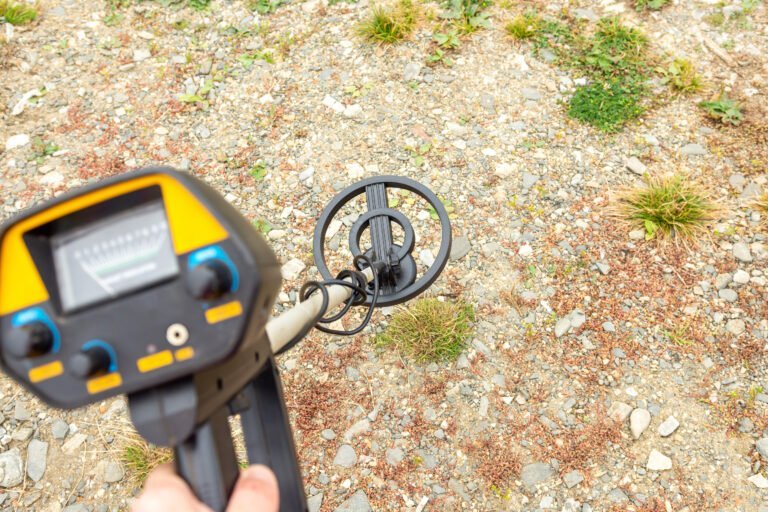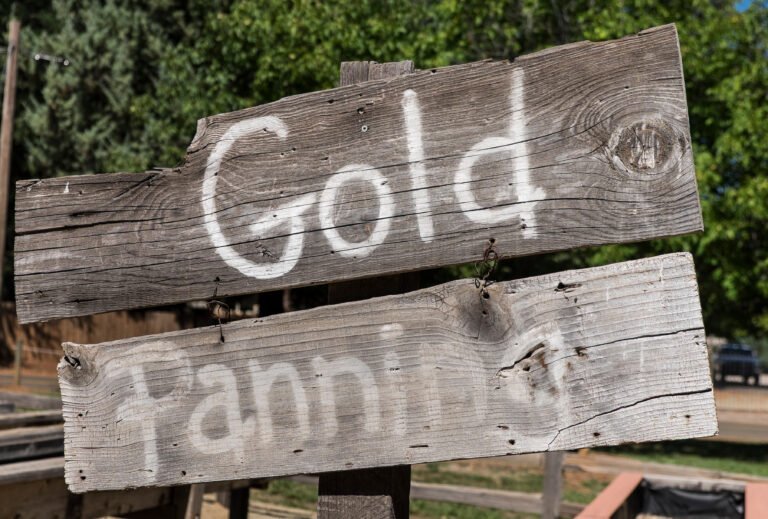Have you ever heard of the “finders, keepers” policy in gold mining and treasure hunting? If not, let me fill you in on this fascinating concept.
First Posted November 25, 2024 | Last Updated on September 11, 2025 by Ryan ConlonDisclosure: This Post Contains Affiliate Links; We earn a commission on purchases.
The principle behind the “finders, keepers” policy is simple – if you discover valuable minerals or gems on public mining sites, you get to keep your finds!
It’s like striking gold and being able to hold onto your treasure.
In the United States, the “finders, keepers” policy is widely implemented in various fee-based mines and dig sites.
It’s a way to encourage individuals to explore and enjoy the thrill of searching for hidden treasures. Imagine unearthing a precious gem or a rare mineral and being able to call it your own.
Now you may be wondering, what is the legal framework behind the “finders, keepers” policy? Well, there is no specific law with the name “finders, keepers.”
It’s more of a common understanding or a principle that has been embraced in the mining and treasure hunting community.
It is based on the concept that if you find something valuable, it becomes your property by default.
So, don’t hesitate to grab your pickaxe and head to one of the many public dig sites across the United States that follow the “finders, keepers” policy.
You never know what treasures await you beneath the surface. Happy hunting!
The History of Gem and Mineral Mining in the United States
Gem and mineral mining has a rich history in the United States. As early as 2,600 years ago, the Pueblo tribe began mining for turquoise in what is now the US.
With the spread of this knowledge, immigrants came to stake their claims and search for buried treasures.
Today, every state in the US has a designated state gem or mineral, and many states have fee-based mines and dig sites open to the public.
To truly appreciate the significance of gem and mineral mining in the United States, it’s important to delve into its historical roots.
The Pueblo tribe’s pursuit of turquoise mining exemplifies the early beginnings of this industry.
Native American tribes, such as the Apache, Hopi, and Navajo, recognized the value of these precious stones and traded them extensively.
With the arrival of European settlers, the exploration for gemstones and minerals expanded.
Precious metals like gold and silver were the primary focus as settlers rushed to the western territories in search of wealth.
The California Gold Rush of 1848 triggered a mass migration and marked a significant turning point in the history of mining in the US.
Over time, the allure of gemstones and minerals grew, leading to the establishment of dedicated mines and dig sites across the country.
These sites offer enthusiasts and curious individuals the opportunity to experience the thrill of gem hunting firsthand.
From sifting through dirt in search of hidden treasures to uncovering rare gemstones, these experiences connect people to the age-old tradition of mining.
“Gem and mineral mining in the United States is not just about the valuable finds; it’s about the exploration, excitement, and connection to the land that has captivated generations.”
Today, gem and mineral mining is not limited to professional miners but is accessible to anyone with a passion for precious stones.
Every state in the US has designated a state gem or mineral, highlighting the importance of these natural resources to the country’s heritage.
A Glimpse into Gem Mining History: The Birth of the American Gem Trade Association
The American Gem Trade Association (AGTA) was established in 1981 and has since played a vital role in promoting, protecting, and advancing the gemstone industry in the United States.
This trade association contributes to the industry’s growth and development by setting ethical standards, facilitating education, and fostering a sense of community among gemstone enthusiasts.
With its roots deeply intertwined with American gem mining history, the AGTA continues to honor the legacy of those who came before.
By preserving and promoting gem and mineral mining, the association ensures that future generations can continue to appreciate the beauty and value of these natural treasures.
Public Dig Sites with “Finders, Keepers” Policies
Across the United States, there are numerous public dig sites where visitors can search for gems and minerals. These sites follow a “finders, keepers” policy, allowing visitors to keep any valuable finds they uncover.
Here are a few examples of public dig sites that implement this policy:
1. Emerald Hollow Mine – Hiddenite, North Carolina
The Emerald Hollow Mine, located in Hiddenite, North Carolina, is a popular gem hunting destination. Visitors to this mine have the opportunity to search for emeralds and North Carolina Hiddenite, a rare gemstone. The mine is open to the public, and any valuable gems found can be kept by the discoverer.
2. Crater of Diamonds State Park – Murfreesboro, Arkansas
Crater of Diamonds State Park is a unique diamond hunting location in Murfreesboro, Arkansas. This park is home to a volcanic crater where visitors can search for diamonds. It is the only diamond mine in the world where the public can keep any diamonds they find. The park provides tools and equipment for diamond hunting, making it an exciting and accessible destination for gem enthusiasts.
These public dig sites offer a thrilling experience for individuals interested in gem and mineral hunting. Whether hunting for emeralds or diamonds, visitors have the chance to uncover valuable treasures while enjoying the natural beauty of these locations.
So, grab your pickaxe and head to one of these finders, keepers public mines for an unforgettable gem hunting adventure!
Professional Gem Hunting
Gem hunting is not just a hobby for some, but a profession. Many individuals, like Karla Proud, have turned their passion for gem hunting into a career.
With decades of experience in the field since the 1950s, Karla Proud has become an expert in finding and collecting rare and valuable stones.
These professional treasure hunters play a crucial role in the industry. They not only hunt for gems but also contribute to the wider world of jewelry and museum collections.
Their finds are often transformed into exquisite pieces of jewelry or showcased in museums, dazzling enthusiasts with the beauty and rarity of these stones.
“Being a professional gem hunter allows me to combine my love for adventure and my passion for discovering unique and precious stones. It’s a thrilling and rewarding profession,” says Karla Proud.
The Tucson Gem & Mineral Show
One event that attracts both professionals and amateurs in the gem and mineral community is the Tucson Gem & Mineral Show in Arizona.
This annual show is a mecca for those passionate about gems and minerals.
It offers a platform for professionals to showcase their finds and knowledge, as well as an opportunity for enthusiasts and collectors to acquire rare and valuable pieces.
This image showcases the incredible treasures that professional gem hunters discover, adding to the allure of the profession.
Whether it’s chasing after rare gemstones or contributing to the world of jewelry and collections, professional gem hunters play a vital role in uncovering the hidden treasures of the Earth.
Prominent Public Dig Sites Worth Exploring
If you’re passionate about gem and mineral hunting, there are several public dig sites across the United States that are definitely worth a visit.
These sites offer unique opportunities to uncover precious gems and minerals. Here are a few noteworthy locations:
1. Emerald Hollow Mine – Hiddenite, North Carolina
Located in Hiddenite, North Carolina, the Emerald Hollow Mine is a popular destination for gem enthusiasts. This site is particularly known for its emeralds and North Carolina Hiddenite. Visitors can enjoy the thrill of searching for these stunning gems.
2. Crater of Diamonds State Park – Murfreesboro, Arkansas
If you dream of finding diamonds, then Crater of Diamonds State Park in Murfreesboro, Arkansas is the place to be. This park boasts rich diamond deposits, offering visitors the chance to discover their own precious gemstones.
3. Jade Cove Trail – Big Sur, California
Jade Cove Trail in Big Sur, California is a paradise for jade enthusiasts. This stunning coastal location allows treasure hunters to search for beautiful jade stones along the shoreline, creating an enchanting and rewarding experience.
4. Morefield Mine – Amelia County, Virginia
For those interested in finding amazonite and a variety of other gems, Morefield Mine in Amelia County, Virginia is an excellent choice. This mine provides an opportunity to uncover a range of captivating gemstones.
5. Graves Mountain – Lincolnton, Georgia
Graves Mountain in Lincolnton, Georgia is renowned for its abundance of gems and minerals. Visitors to this site can explore the mountain and potentially discover a treasure trove of unique and valuable gemstones.
These prominent public dig sites offer an exciting and rewarding adventure for gem and mineral enthusiasts.
Whether you’re searching for emeralds, diamonds, jade, or other precious stones, these locations provide a fantastic opportunity to uncover nature’s hidden treasures.
Gems and Minerals Found at Prominent Public Dig Sites
| Public Dig Site | Gems and Minerals |
|---|---|
| Emerald Hollow Mine – Hiddenite, North Carolina | Emeralds, North Carolina Hiddenite |
| Crater of Diamonds State Park – Murfreesboro, Arkansas | Diamonds |
| Jade Cove Trail – Big Sur, California | Jade |
| Morefield Mine – Amelia County, Virginia | Amazonite and various gems |
| Graves Mountain – Lincolnton, Georgia | Various gems and minerals |
Diamond Hunting at Crater of Diamonds State Park
Crater of Diamonds State Park in Murfreesboro, Arkansas is a renowned diamond hunting site. Visitors have the thrilling opportunity to search for diamonds in the eroded surface of an ancient volcanic crater, making it a unique and exciting adventure.
The park follows a “finders, keepers” policy, allowing visitors to keep any diamonds they find. It’s like discovering a hidden gem and having the chance to take it home as a cherished souvenir.
Crater of Diamonds State Park provides tools for diamond hunting, including shovels, screens, and buckets.
These essentials are available for rent or purchase, ensuring that visitors are equipped for their diamond digging experience.
Upon making a successful find, visitors can take advantage of the park’s complimentary identification and registration services.
This process allows diamond hunters to learn more about their precious discoveries and gives them the official recognition of their find.
Diamond Hunting Tips:
- Wear comfortable clothing and sturdy shoes for ease of movement during your diamond hunting excursion.
- Bring sun protection, such as a hat and sunscreen, as the park’s surface can get quite hot in direct sunlight.
- Pack snacks and water to stay hydrated and energized throughout your diamond hunting adventure.
- Remember to be patient and persistent. Diamond hunting is a unique blend of luck and perseverance.
- Don’t forget to enjoy the breathtaking natural surroundings of Crater of Diamonds State Park while on your quest for precious stones.
“Discovering a diamond at Crater of Diamonds State Park is an extraordinary experience. It’s a cherished memory that will sparkle for a lifetime.” – Avid Diamond Hunter
So, gear up and embark on a diamond digging adventure at Crater of Diamonds State Park. Who knows, you might just uncover a sparkling treasure!
Controversy Surrounding the FBI’s Search for Civil War-era Gold
The FBI’s excavation in Dents Run, Pennsylvania in search of Civil War-era gold has ignited a firestorm of controversy and allegations of a cover-up.
Dennis Parada, a seasoned treasure hunter and founder of Finders Keepers, firmly believes that the FBI stumbled upon a valuable cache of gold but intentionally distorted evidence and withheld records to conceal their astonishing discovery.
As Parada and his team meticulously pore over perplexing government documents and scrutinize perplexing photos, they raise compelling questions and cast doubt on the FBI’s official narrative.
Parada’s deep-rooted skepticism stems from inconsistencies in the FBI’s reports and an alleged lack of transparency surrounding the excavation process.
Clinging to the belief that the Dents Run area harbors hidden treasures from the past, Parada and his advisers delve further into the mystery, unearthing intriguing clues that challenge the FBI’s claims of an unsuccessful search.
“The evidence we’ve amassed suggests a different story altogether. The FBI’s efforts to downplay our findings raise serious concerns about their true intentions and motivations,” says Parada.
This contentious dispute between the treasure hunter and the FBI has attracted significant attention from the media and the public.
Many eagerly await the resolution of this case, hoping for a resolution that sheds light on the truth behind the Dents Run gold and the veracity of the FBI’s actions.
The Quest for Uncovering the Truth
Dennis Parada and his team are determined to uncover the truth about the FBI’s excavation in Dents Run.
They accuse the FBI of altering evidence and conducting a clandestine dig. Parada’s legal battle with the FBI is ongoing, with a judge overseeing the case expected to rule on the release of additional records and the operational plan for the gold dig.
Parada’s goal is not only to solve the mystery but also to potentially claim a finder’s fee for the valuable gold.
Dennis Parada and his team have relentlessly pursued the truth behind the FBI’s excavation in Dents Run, Pennsylvania.
They firmly believe that the FBI tampered with evidence and conducted a secretive dig, leading to the suspicion of a gold discovery cover-up.
Parada has taken the FBI to court, and the ongoing litigation has captivated the nation.
“We will not rest until the truth is uncovered and justice is served. The people deserve to know what really happened.” – Dennis Parada
The FBI’s actions have raised many questions, and Parada’s legal battle aims to expose the truth hidden in the excavation records.
A judge is overseeing the case and is expected to rule on the release of additional records and the operational plan for the gold dig.
This ruling will be pivotal in uncovering the truth and revealing any potential cover-up.
FBI Excavation Records
The excavation records held by the FBI are crucial to understanding what transpired during the dig in Dents Run.
These records may shed light on the extent of the digs, the presence of valuable gold, and any discrepancies or alterations made by the FBI. Parada and his legal team eagerly await the release of these records, as they hold the key to uncovering the truth behind the gold discovery.
Ongoing Litigation
The legal battle between Dennis Parada and the FBI continues to unfold. Both sides are fiercely advocating for their positions, with Parada seeking justice and transparency, while the FBI defends its actions.
The court’s ruling on the release of additional records and the operational plan for the gold dig will greatly impact the outcome of this ongoing litigation.
Parada’s pursuit of the truth is not solely motivated by curiosity. If evidence of a valuable gold discovery is uncovered, Parada may be entitled to a finder’s fee.
This potential financial incentive adds another level of significance to his quest, creating a compelling narrative of justice and potentially lucrative rewards.
Conclusion
The “finders, keepers” policy in gold mining and treasure hunting is a fascinating concept that allows individuals to keep valuable finds they uncover.
This policy has gained popularity and is widely implemented in various fee-based mines and dig sites across the United States.
Gem and mineral mining have a rich history in the country, dating back thousands of years.
Public dig sites provide opportunities for people to experience the excitement of gem and mineral hunting. Some individuals have even turned this hobby into a profession, specializing in finding and collecting rare and valuable stones.
Events like the Tucson Gem & Mineral Show attract both professionals and amateurs in the gem and mineral community.
The controversy surrounding the FBI’s search for Civil War-era gold adds another layer of intrigue to treasure hunting. The ongoing legal battle between Dennis Parada and the FBI exemplifies the dedication to uncovering the truth.
As the quest for finding hidden treasures continues, the “finders, keepers” principle remains an integral part of this exciting and adventurous pursuit.
References
- https://www.smithsonianmag.com/travel/hidden-gems-hunt-treasure-these-geological-sites-180957962/
- http://www.arkansasstateparks.com/parks/crater-diamonds-state-park/digging-for-diamonds
- https://fortune.com/2023/02/18/fbi-civil-war-gold-dents-run-pennsylvania-lawsuit-dennis-parada-finders-keepers-detectorist/

Meet Ryan Conlon, the passionate owner and driving force behind Pan for Treasure.
With an unwavering love for the art of gold panning, Ryan has transformed his enthusiasm into a thriving community hub for fellow treasure seekers. info@panfortreasure.com
A seasoned gold panning enthusiast, Ryan’s journey began with a simple pan and a dream, evolving into a deep appreciation for the history, geology, and thrill of uncovering precious metals.
Subscribe to Our Newsletter

